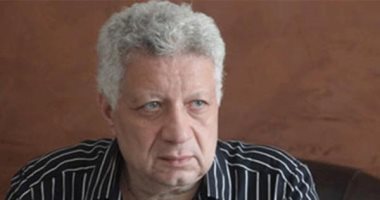The exhibition Naked in Thorns, named after one of the artist’s paintings, more precisely according to a theme elaborated in time in several variants, tries to bring his work closer to completeness, including public procurement. In the Wallenstein Riding School he summarizes his free work in nine thematic sections, in the St. Agnes Monastery he shows his work for sacral spaces and in the Trade Fair Palace he shows secular orders or a large panel created for CSA.
–
Mikuláš Medek – Naked in a Thorn
Photo: Petr Hloušek, Právo
The National Gallery therefore offers, among other things, a unique opportunity to see in one place Medek’s works created for the churches in Jedovnice and Senetářov and for the chapel in Kotvrdovice, which will probably not be repeated for a very long time. Not even the seventeen-meter panels intended for the airports in Košice and Prague-Ruzyně, not to mention the smaller third one, created for Damascus, are commonly seen. None of them remained in place.
–
In addition, the project’s curators Lenka Bydžovská and Karel Srp also come up with many as yet unexhibited works from the author’s estate, such as tempera paintings that Medek created before he began studying art. They also offer the opportunity to get acquainted with little or no known films and film screenings, including Jiří Šebelka’s graduate film The Parable, in which Medek acted as an actor. Thanks to close cooperation with the author’s family, lesser-known drawings, photographs and documents from his estate are on display at the exhibition.
–
From surrealism to informal
Despite his not very long life, which was cut short by a serious illness, Medek created an extensive work of painting. In the beginning, he reacted to expressionism and cubism, but surrealism and existentialism had a fundamental influence on his work. He later began to move from figuration to abstraction and became a key figure in the painterly expression known as informal.
–
The Great Food, 1956, oil tempera, oil, canvas, 130 x 161 cm, NGP.
Photo: National Gallery Prague
The curators find a leading figure in it, who has always found his place in several generational groups. Therefore, they also included in the exhibition the works of authors who influenced Medka and with whose work he coped. These included Toyen, Salvador Dali and Karel Teige.
–
They complement the show with the work of peers with whom Medek became friends and with whom he exhibited together at the turn of the 1950s and 1960s. They are Zbyněk Sekal, Josef Istler, Jan Koblasa or Vladimír Boudník. The work of his wife, an important representative of Czech art photography, Emily Medková, was not left out. Both were connected by an artistic collaboration with the Surrealist group, and Medek also often appeared in her films.
–
Exhibition exposition
Photo: Petr Hloušek, Právo
With the exhibition, the curators try to show the painter as a personality who was able to withstand the various artistic and social pressures of the time. “It is an example of the complete preservation of artistic freedom, independent of the circumstances in which one’s own work is created,” they emphasize.
–
International context
The National Gallery began preparing a retrospective of Mikuláš Medek five years ago. It belonged to the planned projects of the then director of the gallery Jiří Fajt. The original concept of the curators provided for the fact that he would also present one of the most important Czech painters of the second half of the twentieth century in an international context, ie in the context of works borrowed from foreign galleries.
–
However, due to accumulated unpredictable events, starting with changes in gallery management and ending with this year’s coronavirus pandemic, the exhibition opens a year later and the foreign context includes much less generously than its authors originally planned. However, he certainly does not neglect it. It is reminiscent, for example, of the French figuralist Bernard Buffet, whose work Medek probably knew only from black-and-white reproductions, because he was not allowed to travel abroad for years.
—


